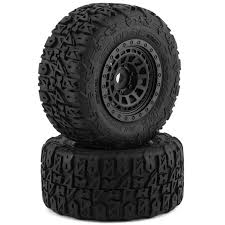The Importance of RC Tyres in Maximising Performance
When it comes to radio-controlled (RC) cars, enthusiasts understand the vital role that tyres play in determining performance on the track. Just like real cars, the right set of tyres can make a significant difference in handling, traction, and overall speed.
Types of RC Tyres
RC tyres come in various types to suit different track conditions and racing styles. From slick tyres for smooth surfaces to off-road tyres for rugged terrains, choosing the right type is crucial for optimal performance. Some popular tyre compounds include soft, medium, and hard compounds, each offering specific advantages depending on the track surface.
Tyre Tread Patterns
The tread pattern of RC tyres also plays a critical role in performance. Different tread designs are suited for specific track conditions – from grooved patterns for high grip surfaces to block patterns for loose or dusty tracks. Understanding the terrain you’ll be racing on is essential in selecting the most suitable tread pattern for your RC car.
Proper Maintenance
Just like real car tyres, RC tyres require proper maintenance to ensure longevity and consistent performance. Regularly cleaning your tyres after races, checking for wear and tear, and adjusting tyre pressures can all contribute to maximising their lifespan and performance on the track.
Tyre Selection Tips
When selecting RC tyres, consider factors such as track surface, weather conditions, and your driving style. Experimenting with different tyre compounds and tread patterns can help you find the optimal setup that suits your racing needs. Don’t be afraid to seek advice from fellow racers or professionals to get insights into tyre selection.
Conclusion
In conclusion, RC tyres are a crucial component in maximising performance and achieving success on the race track. By understanding the different types of tyres available, their tread patterns, and proper maintenance techniques, you can enhance your driving experience and take your RC racing skills to new heights.
Essential FAQs on Selecting and Maintaining RC Tyres for Optimal Performance
- What are the best RC tyres for racing on a smooth track?
- How do I choose the right tread pattern for my RC tyres?
- What is the difference between soft, medium, and hard compound RC tyres?
- How often should I replace my RC tyres?
- Do weather conditions affect the performance of RC tyres?
What are the best RC tyres for racing on a smooth track?
When it comes to racing on a smooth track with your RC car, choosing the best tyres can make a significant difference in performance. For smooth surfaces, many experienced racers recommend using slick tyres with a soft compound. Slick tyres provide maximum contact patch area with the track, offering excellent traction and grip. The soft compound helps the tyres conform to the surface, enhancing cornering stability and overall speed. It’s essential to consider factors such as tyre diameter, width, and foam inserts to fine-tune your setup for optimal performance on a smooth track.
How do I choose the right tread pattern for my RC tyres?
Choosing the right tread pattern for your RC tyres is a common query among enthusiasts looking to optimise their performance on the track. The key to selecting the ideal tread pattern lies in understanding the specific track conditions you will be racing on. For high-grip surfaces, grooved patterns are recommended to maximise traction and stability. On the other hand, block patterns are more suitable for loose or dusty tracks, providing better control and grip in challenging terrain. By assessing the track surface and considering factors such as grip level and driving style, you can make an informed decision on the most appropriate tread pattern that will enhance your RC racing experience.
What is the difference between soft, medium, and hard compound RC tyres?
When it comes to RC tyres, understanding the difference between soft, medium, and hard compound options is essential for achieving optimal performance on the track. Soft compound tyres are known for providing maximum grip on smooth surfaces, making them ideal for high-traction tracks. Medium compound tyres strike a balance between grip and durability, offering versatility across various track conditions. On the other hand, hard compound tyres are favoured for their longevity and stability on abrasive surfaces but may sacrifice some grip compared to softer compounds. Choosing the right compound based on track surface, weather conditions, and driving style can significantly impact your RC car’s handling and overall performance during races.
How often should I replace my RC tyres?
One frequently asked question in the world of RC racing is, “How often should I replace my RC tyres?” The answer to this question depends on various factors such as track conditions, driving style, and maintenance practices. Generally, RC tyres should be replaced when they show signs of significant wear or damage that affects performance. Regularly inspecting your tyres for wear patterns, checking tread depth, and assessing overall grip levels can help determine when it’s time for a replacement. It’s essential to monitor your tyres closely and replace them as needed to ensure optimal performance on the track.
Do weather conditions affect the performance of RC tyres?
Weather conditions can indeed have a significant impact on the performance of RC tyres. Changes in temperature, humidity, and track conditions can influence the grip and traction of the tyres, ultimately affecting the handling and speed of the RC car. In colder temperatures, tyre compounds may harden, reducing grip levels, while hot weather can cause tyres to become too soft and lose their shape. It’s crucial for RC enthusiasts to consider weather conditions when selecting tyres for optimal performance on the track and to adjust their setup accordingly to adapt to changing weather patterns.

